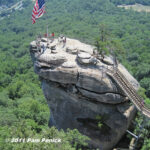Cleaning small landscape rocks effectively involves removing dirt, algae, and debris to maintain their aesthetic appeal. At rockscapes.net, we understand the importance of keeping your landscape looking its best. This guide will provide you with expert tips and techniques to clean your small landscape rocks thoroughly, ensuring they enhance your outdoor space for years to come.
1. Why Is Cleaning Small Landscape Rocks Important?
Cleaning small landscape rocks is crucial for several reasons. It enhances the appearance of your garden, prevents weed growth, improves drainage, and extends the lifespan of your landscaping. Let’s explore these benefits in detail.
1.1. Enhancing Aesthetic Appeal
Keeping your decorative stone landscaping clean adds aesthetic value, making your outdoor area more attractive. Clean rocks showcase their natural beauty, improving the overall look and feel of your yard.
1.2. Preventing Invasive Weeds
Cleaning landscape rocks reduces weed growth. Regular cleaning saves you time and effort by minimizing the need for frequent weed removal, ensuring a tidy and well-maintained garden.
1.3. Improving Drainage
Decorative landscape rocks play a vital role in outdoor drainage. Debris and dirt can clog the rocks, impeding drainage and causing water buildup. Cleaning the rocks ensures proper drainage, preventing water damage and other potential problems.
1.4. Increasing Longevity
Regular cleaning helps extend the lifespan of your decorative landscape rocks. By preventing damage from dirt, algae, and debris, you save money on costly repairs or replacements, ensuring your landscaping remains beautiful for longer.
2. What Are the Main Challenges in Cleaning Small Landscape Rocks?
Cleaning small landscape rocks presents unique challenges compared to larger rocks. Understanding these challenges will help you choose the right methods and tools for effective cleaning.
2.1. Accessibility
Small rocks can be difficult to access and clean individually, especially when they are densely packed. Reaching into tight spaces and ensuring each rock is thoroughly cleaned can be time-consuming.
2.2. Delicate Structures
Small landscape rocks are often used in delicate landscape designs. According to landscape architects, disturbing the arrangement of these rocks can disrupt the aesthetic balance of the garden.
2.3. Algae Growth
Algae tend to grow more easily on smaller rocks because they retain moisture and provide a suitable environment for algae to thrive. Removing algae can be difficult and may require specific cleaning solutions.
2.4. Accumulation of Debris
Small rocks can trap leaves, twigs, and other debris more easily than larger rocks. Removing this debris requires careful attention to detail to ensure the rocks remain clean and attractive.
3. What Are the 5 Most Searched Questions on Google About Cleaning Small Landscape Rocks?
To address your specific needs, here are five of the most frequently asked questions about cleaning small landscape rocks, along with detailed answers:
3.1. What Is the Best Way to Clean Small Landscape Rocks?
The best way to clean small landscape rocks involves removing debris, rinsing with water, scrubbing with a brush, and using a cleaning solution if necessary. Regular maintenance prevents buildup and keeps your rocks looking their best.
- Remove Debris: Begin by removing any loose leaves, twigs, or other debris from the rocks.
- Rinse with Water: Use a garden hose to rinse the rocks, removing surface dirt.
- Scrub with a Brush: Use a stiff-bristle brush to scrub the rocks, focusing on areas with stains or algae.
- Cleaning Solution: For stubborn stains, use a mixture of water and mild detergent or white vinegar.
- Regular Maintenance: Periodically rinse the rocks to prevent buildup.
3.2. How Do I Get Rid of Algae on Landscape Rocks?
To get rid of algae on landscape rocks, use a mixture of bleach and water, scrub the rocks, and rinse thoroughly. Prevention is key, so ensure proper drainage and sunlight exposure.
- Bleach Solution: Mix one part bleach with four parts water.
- Scrub the Rocks: Apply the solution to the rocks and scrub with a stiff-bristle brush.
- Rinse Thoroughly: Rinse the rocks with water to remove any remaining bleach solution.
- Prevention: Ensure proper drainage and sunlight exposure to prevent future algae growth.
3.3. Can I Use a Pressure Washer to Clean Small Landscape Rocks?
Yes, you can use a pressure washer to clean small landscape rocks, but use caution to avoid damaging the rocks or disturbing the surrounding landscape. Use a low-pressure setting and keep the nozzle at a safe distance.
- Low-Pressure Setting: Use a pressure washer with a low-pressure setting to prevent damage.
- Safe Distance: Keep the nozzle at a safe distance from the rocks to avoid dislodging them.
- Test First: Test the pressure washer on a small, inconspicuous area first to ensure it does not cause damage.
3.4. What Cleaning Solutions Are Safe for Landscape Rocks and Plants?
Safe cleaning solutions for landscape rocks and plants include mild dish soap, white vinegar, and natural enzyme cleaners. Avoid harsh chemicals that can harm plants and disrupt the soil ecosystem.
- Mild Dish Soap: Mix a small amount of dish soap with water for a gentle cleaning solution.
- White Vinegar: Use a mixture of equal parts water and white vinegar to remove stains and algae.
- Natural Enzyme Cleaners: Opt for natural enzyme cleaners that are safe for plants and the environment.
- Avoid Harsh Chemicals: Avoid using bleach, ammonia, or other harsh chemicals that can harm plants and soil.
3.5. How Often Should I Clean My Landscape Rocks?
You should clean your landscape rocks at least twice a year, typically in the spring and fall. More frequent cleaning may be necessary if you notice significant dirt, algae, or debris buildup.
- Spring and Fall: Plan to clean your rocks in the spring and fall as part of your seasonal maintenance.
- As Needed: Clean more frequently if you notice significant dirt, algae, or debris buildup.
- Regular Maintenance: Regularly remove leaves and debris to minimize the need for deep cleaning.
4. What Tools and Materials Do I Need to Clean Small Landscape Rocks?
To clean small landscape rocks effectively, gather the necessary tools and materials. Having the right equipment will make the job easier and more efficient.
4.1. Essential Tools
- Garden Hose: For rinsing the rocks and removing loose dirt.
- Stiff-Bristle Brush: For scrubbing the rocks and removing stubborn stains.
- Bucket: For mixing cleaning solutions.
- Gloves: To protect your hands from dirt and cleaning solutions.
- Safety Goggles: To protect your eyes, especially when using a pressure washer or cleaning solutions.
- Leaf Blower or Rake: For removing leaves and debris.
- Small Brush or Toothbrush: For cleaning crevices and hard-to-reach areas.
- Pressure Washer (Optional): For a more powerful cleaning option.
4.2. Cleaning Solutions
- Mild Dish Soap: A gentle cleaning solution for removing dirt and grime.
- White Vinegar: Effective for removing stains and algae.
- Bleach: For stubborn algae growth (use with caution).
- Natural Enzyme Cleaners: Safe for plants and the environment.
- Stone Sealant (Optional): To protect the rocks and make future cleaning easier.
5. What Are the Step-by-Step Instructions to Clean Small Landscape Rocks?
Follow these step-by-step instructions to clean your small landscape rocks effectively:
5.1. Step 1: Prepare the Area
Remove any furniture, decorations, or other items near the landscape rocks. This provides easy access to the stones and prevents contamination during the cleaning process.
5.2. Step 2: Remove Loose Debris
Use a rake or leaf blower to clear away leaves, twigs, and other loose debris from the rocks. This makes the subsequent cleaning process more efficient.
5.3. Step 3: Rinse the Rocks
Gently rinse the rocks using a garden hose or pressure washer. Start at the top and work your way down, allowing the water to flow away from the clean sections.
5.4. Step 4: Apply Cleaning Solution
Mix a gentle detergent with water in a bucket to create a mild cleaning solution. For stubborn stains, use a mixture of equal parts water and white vinegar or a diluted bleach solution (one part bleach to four parts water).
5.5. Step 5: Scrub the Rocks
Dip a stiff-bristle brush into the cleaning solution and scrub the rocks. Focus on areas with visible stains, algae growth, or dirt buildup.
5.6. Step 6: Clean Crevices and Hard-to-Reach Areas
Use a small brush or toothbrush to clean crevices and hard-to-reach areas. These areas often trap dirt and debris, so thorough cleaning is essential.
5.7. Step 7: Rinse Again
After scrubbing, rinse the rocks again with the garden hose or pressure washer to remove any remaining dirt and cleaning solution.
5.8. Step 8: Allow to Dry
Allow the rocks to air dry completely. This prevents water spots and ensures a polished look. If you need to use the space quickly, use a leaf blower or a dry towel to remove any remaining moisture.
6. How to Clean Different Types of Small Landscape Rocks?
Different types of landscape rocks may require specific cleaning methods. Here are some tips for cleaning common types of small landscape rocks:
6.1. River Rocks
River rocks are smooth and often used in water features or garden beds. Clean them using a garden hose, stiff-bristle brush, and a mild detergent solution. Pay extra attention to removing algae, as river rocks tend to retain moisture.
6.2. White Landscape Stones
White landscape stones provide a clean and polished look. Clean them using a garden hose, stiff-bristle brush, and a mild detergent solution. For stubborn stains, use a diluted bleach solution, but rinse thoroughly to prevent discoloration.
6.3. Pea Gravel
Pea gravel consists of small, rounded stones often used for pathways or ground cover. Clean pea gravel by raking to remove debris and rinsing with a garden hose. For a deeper clean, use a pressure washer with a low-pressure setting.
6.4. Lava Rocks
Lava rocks are porous and lightweight, making them ideal for gardens and fire pits. Clean lava rocks using a garden hose and stiff-bristle brush. Avoid using harsh chemicals, as they can be absorbed by the porous surface.
7. What Are Some Common Mistakes to Avoid When Cleaning Small Landscape Rocks?
Avoid these common mistakes when cleaning small landscape rocks to prevent damage and ensure effective cleaning:
7.1. Using Harsh Chemicals
Avoid using harsh chemicals like bleach, ammonia, or strong detergents. These chemicals can harm plants, disrupt the soil ecosystem, and damage the rocks themselves.
7.2. Applying Too Much Pressure
When using a pressure washer, avoid applying too much pressure, as this can dislodge the rocks or damage their surface. Use a low-pressure setting and keep the nozzle at a safe distance.
7.3. Neglecting Safety Precautions
Always wear gloves and safety goggles when cleaning landscape rocks, especially when using cleaning solutions or a pressure washer. This protects your hands and eyes from potential irritants.
7.4. Ignoring Crevices and Hard-to-Reach Areas
Don’t neglect to clean crevices and hard-to-reach areas. These areas often trap dirt and debris, leading to algae growth and an unkempt appearance.
8. How Can I Maintain My Landscape Rocks After Cleaning?
Maintaining your landscape rocks after cleaning is essential to keep them looking their best. Here are some maintenance tips:
8.1. Regular Debris Removal
Regularly remove leaves, twigs, and other debris from the rocks. Use a rake or leaf blower to keep the area clear.
8.2. Periodic Rinsing
Periodically rinse the rocks with a garden hose to remove surface dirt and prevent buildup.
8.3. Weed Control
Implement weed control measures, such as using a weed barrier or applying a safe weed killer, to prevent weed growth around the rocks.
8.4. Proper Drainage
Ensure proper drainage to prevent water buildup, which can lead to algae growth and other issues.
8.5. Stone Sealant
Consider applying a stone sealant to protect the rocks and make future cleaning easier. Sealants can help prevent the buildup of dirt, algae, and stains.
9. What Are the Benefits of Hiring Professionals to Clean My Landscape Rocks?
Hiring professionals to clean your landscape rocks offers several benefits:
9.1. Expertise and Experience
Professionals have the expertise and experience to clean landscape rocks effectively and safely. They understand the best methods and tools for different types of rocks and stains.
9.2. Time Savings
Cleaning landscape rocks can be time-consuming, especially for large areas. Hiring professionals saves you time and effort, allowing you to focus on other tasks.
9.3. Proper Equipment
Professionals have access to specialized equipment, such as pressure washers and industrial-strength cleaning solutions, that may not be available to homeowners.
9.4. Prevention of Damage
Professionals know how to clean landscape rocks without causing damage to the rocks or the surrounding landscape.
9.5. Long-Term Maintenance
Some professionals offer long-term maintenance plans to keep your landscape rocks looking their best year-round.
10. How Does Rockscapes.net Help With Your Landscaping Needs?
At rockscapes.net, we provide a wealth of information and resources to help you with all your landscaping needs. Our website offers:
- Design Inspiration: Explore a wide range of landscape design ideas featuring various types of rocks.
- Detailed Information: Learn about different types of rocks, their applications, and their benefits.
- Step-by-Step Guides: Access step-by-step guides on how to install and maintain rock landscapes.
- Expert Advice: Get expert advice from our team of landscaping professionals.
- Contact Information: Contact us for personalized assistance and recommendations.
For those in the Tempe, AZ area, visit us at: 1151 S Forest Ave, Tempe, AZ 85281, United States. Call us at: +1 (480) 965-9011.
11. FAQ About Cleaning Small Landscape Rocks
Here are some frequently asked questions about cleaning small landscape rocks:
11.1. Can I Use Baking Soda to Clean Landscape Rocks?
Yes, baking soda can be used to clean landscape rocks. It is a gentle, non-toxic cleaning agent that can help remove stains and algae. Mix baking soda with water to form a paste, apply it to the rocks, scrub with a brush, and rinse thoroughly.
11.2. How Do I Prevent Weeds from Growing in My Landscape Rocks?
To prevent weeds from growing in your landscape rocks, use a weed barrier or landscape fabric underneath the rocks. Regularly remove any weeds that do appear and apply a safe weed killer if necessary.
11.3. Is It Safe to Use Vinegar on All Types of Landscape Rocks?
Vinegar is generally safe to use on most types of landscape rocks, but it may not be suitable for acid-sensitive stones like limestone or marble. Test the vinegar on a small, inconspicuous area first to ensure it does not cause damage.
11.4. How Do I Remove Moss from Landscape Rocks?
To remove moss from landscape rocks, use a stiff-bristle brush and a mixture of water and white vinegar. Scrub the rocks to remove the moss and rinse thoroughly. Ensure proper drainage and sunlight exposure to prevent future moss growth.
11.5. Can I Use a Power Washer on Delicate Landscape Rocks?
Use caution when using a power washer on delicate landscape rocks, as high pressure can damage the rocks. Use a low-pressure setting and keep the nozzle at a safe distance.
11.6. What Is the Best Way to Clean Colored Landscape Rocks?
The best way to clean colored landscape rocks is to use a mild detergent solution and a soft-bristle brush. Avoid using harsh chemicals or abrasive cleaners that can fade or damage the color.
11.7. How Do I Protect My Landscape Rocks from Staining?
To protect your landscape rocks from staining, apply a stone sealant specifically designed for stone surfaces. Sealants can help prevent the buildup of dirt, algae, and stains.
11.8. Can I Leave Cleaning Solutions on My Landscape Rocks Overnight?
Avoid leaving cleaning solutions on your landscape rocks overnight, as this can cause discoloration or damage. Always rinse the rocks thoroughly after cleaning.
11.9. How Do I Clean Landscape Rocks in a Water Feature?
To clean landscape rocks in a water feature, remove the rocks from the water feature, clean them using a garden hose, stiff-bristle brush, and a mild detergent solution, and rinse thoroughly before returning them to the water feature.
11.10. What Are the Benefits of Using Natural Cleaning Solutions?
The benefits of using natural cleaning solutions include being safe for plants, the environment, and your family. Natural cleaning solutions like baking soda and white vinegar are effective for removing stains and algae without the risk of harmful chemicals.
12. Conclusion: Keeping Your Landscape Rocks Pristine
Cleaning small landscape rocks effectively is essential for maintaining the beauty and longevity of your outdoor space. By following the tips and techniques outlined in this guide, you can keep your rocks looking pristine and enhance the overall aesthetic of your garden. Remember to visit rockscapes.net for more inspiration, detailed information, and expert advice on all your landscaping needs.
Ready to transform your landscape with beautifully clean rocks? Visit rockscapes.net today to explore design ideas, learn about different types of rocks, and get expert advice. Contact us now and let us help you create the landscape of your dreams!
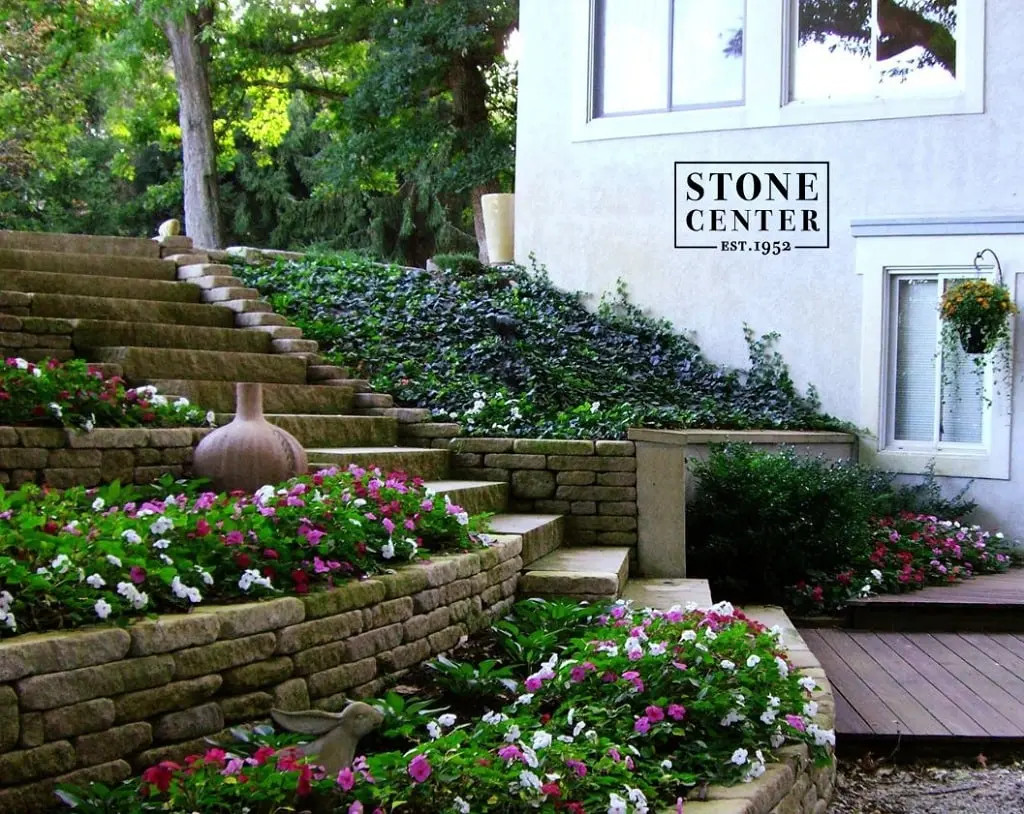 cleaning landscape rocks
cleaning landscape rocks
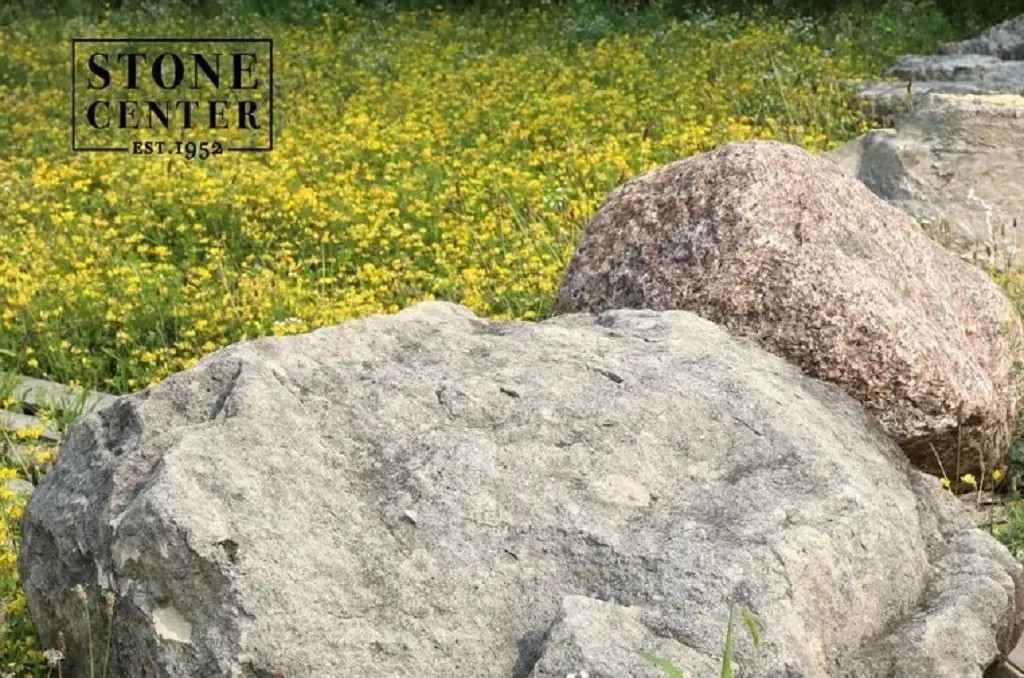 how to clean river rock
how to clean river rock
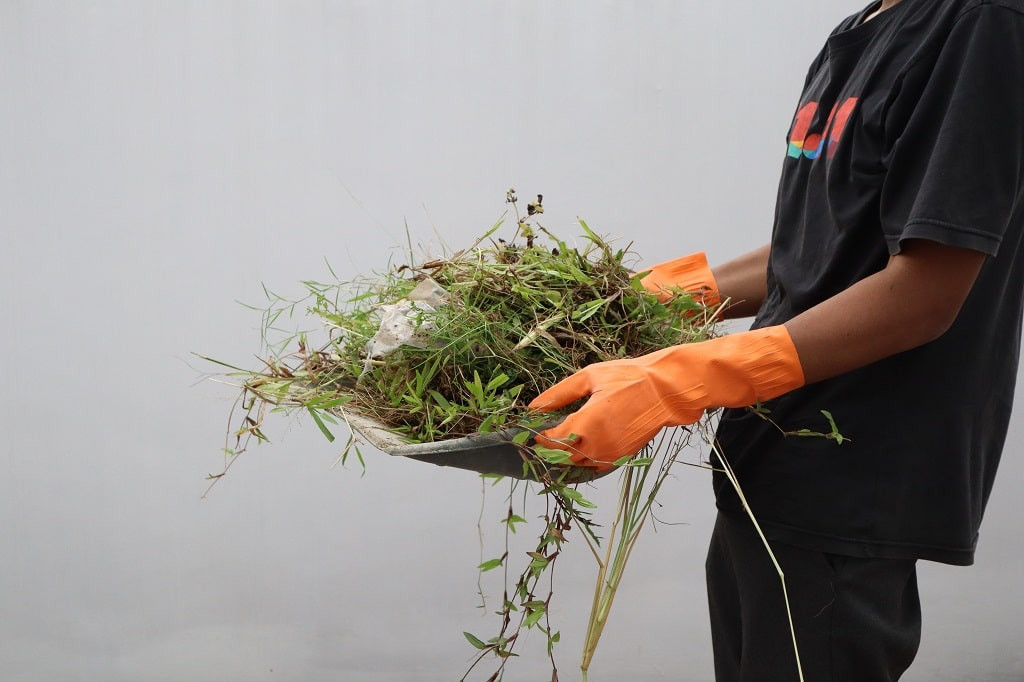 clean landscape rock
clean landscape rock
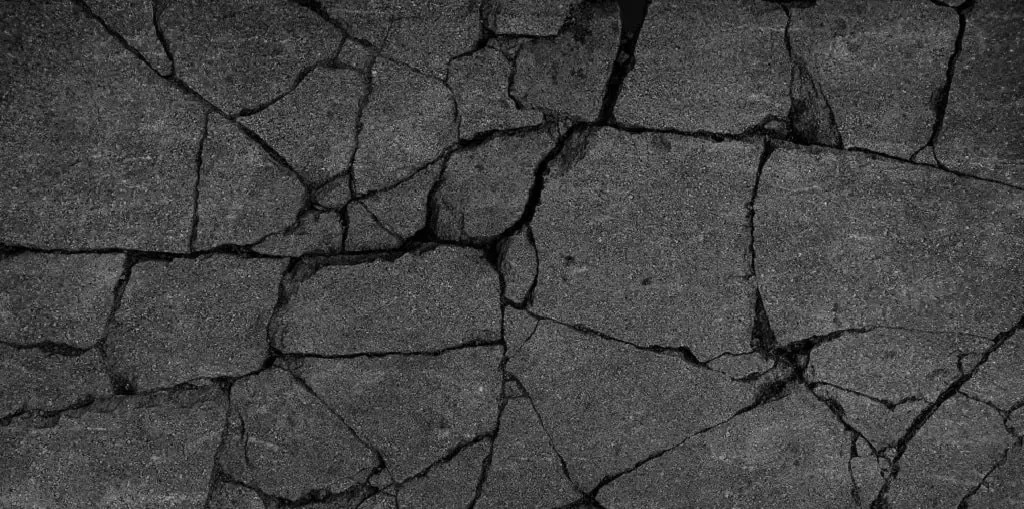 how to clean dirty landscape rocks
how to clean dirty landscape rocks

